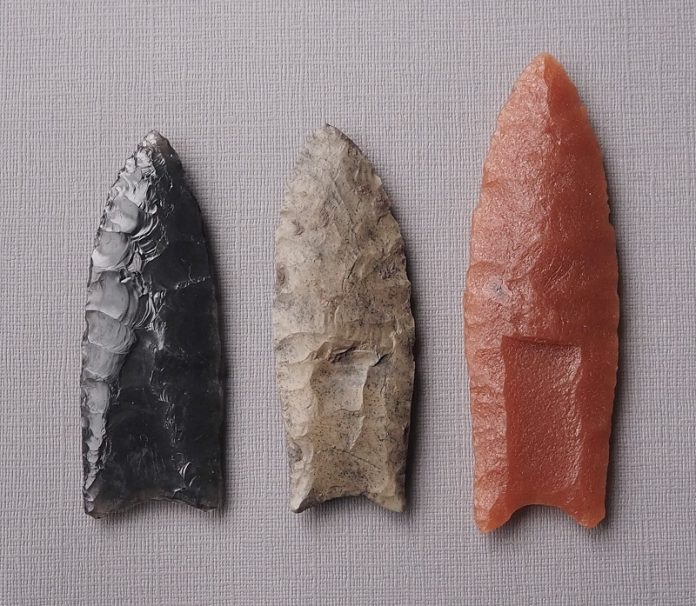
For years, archaeologists have debated how early humans hunted massive Ice Age animals like mammoths and mastodons using sharpened stone tools.
Many theories suggested that people threw spears tipped with Clovis points—razor-sharp stones shaped for hunting—or that they scavenged from already wounded animals.
However, new research from UC Berkeley archaeologists suggests a different, more ingenious method.
Instead of throwing spears, early humans may have used a technique where they planted the butt of their spears firmly in the ground, angling the weapon upward to impale a charging animal.
This method would allow the force of the animal’s charge to drive the spear deep into its body, causing much more damage than a human could achieve by throwing a spear.
The research team, led by Scott Byram from Berkeley’s Archaeological Research Facility, studied historical records and artwork from around the world that depicted people hunting with planted spears.
They also conducted the first experimental study on how stone-tipped spears react to the force of a large animal.
Their findings, published in the journal PLOS ONE, reveal that when the spear’s stone tip pierced the animal’s flesh, it acted like a modern hollow-point bullet, inflicting severe injuries.
“This ancient Native American design was an incredible innovation in hunting strategies,” Byram said.
“It gives us a new perspective on how people might have hunted and survived during the Ice Age.”
Clovis points, named after Clovis, New Mexico, where they were first discovered, are some of the most commonly found artifacts from the Ice Age.
These stone points, which range in size from a thumb to a midsize smartphone, are known for their sharp edges and fluted indentations. Thousands have been found across the U.S., sometimes even within mammoth skeletons.
In popular culture, these points have often been depicted as tips for thrown spears, as seen in video games like “Far Cry Primal” and movies like 10,000 B.C.. But Byram and his colleague, Jun Sunseri, argue that this portrayal might not reflect the realities of Ice Age life.
Their research suggests that the Clovis points were likely used in a system designed to withstand the immense force of a charging animal. The wooden and bone shafts of the spears, combined with the stone points, would have been carefully engineered to function as a powerful, defensive weapon.
To test their theory, the team built a platform to simulate the force of an animal attack. They found that the spear system, when planted in the ground, could endure much greater force than if it were thrown.
This suggests that early humans used planted spears to protect themselves from large animals like mammoths, bison, and saber-toothed cats.
The idea for this study came to Byram during his graduate school years when he was making replica Clovis points. He realized that the time and effort invested in creating these tools meant they likely served a crucial purpose beyond simple hunting.
Further inspiration came during conversations around a campfire with Sunseri and Kent Lightfoot, another Berkeley archaeologist. They discussed how the engineering of spear butts was just as important as the points, particularly in African communities where Sunseri had studied.
“The sophisticated Clovis technology developed in North America shows the incredible ingenuity and skill of early Indigenous people,” Lightfoot said.
In the future, the team plans to continue their research by building a replica mammoth to simulate how a planted spear would perform against a massive, fast-moving animal. This study opens up new ways of understanding how early humans lived and hunted alongside the giant creatures of the Ice Age.
Source: UC Berkerley.



